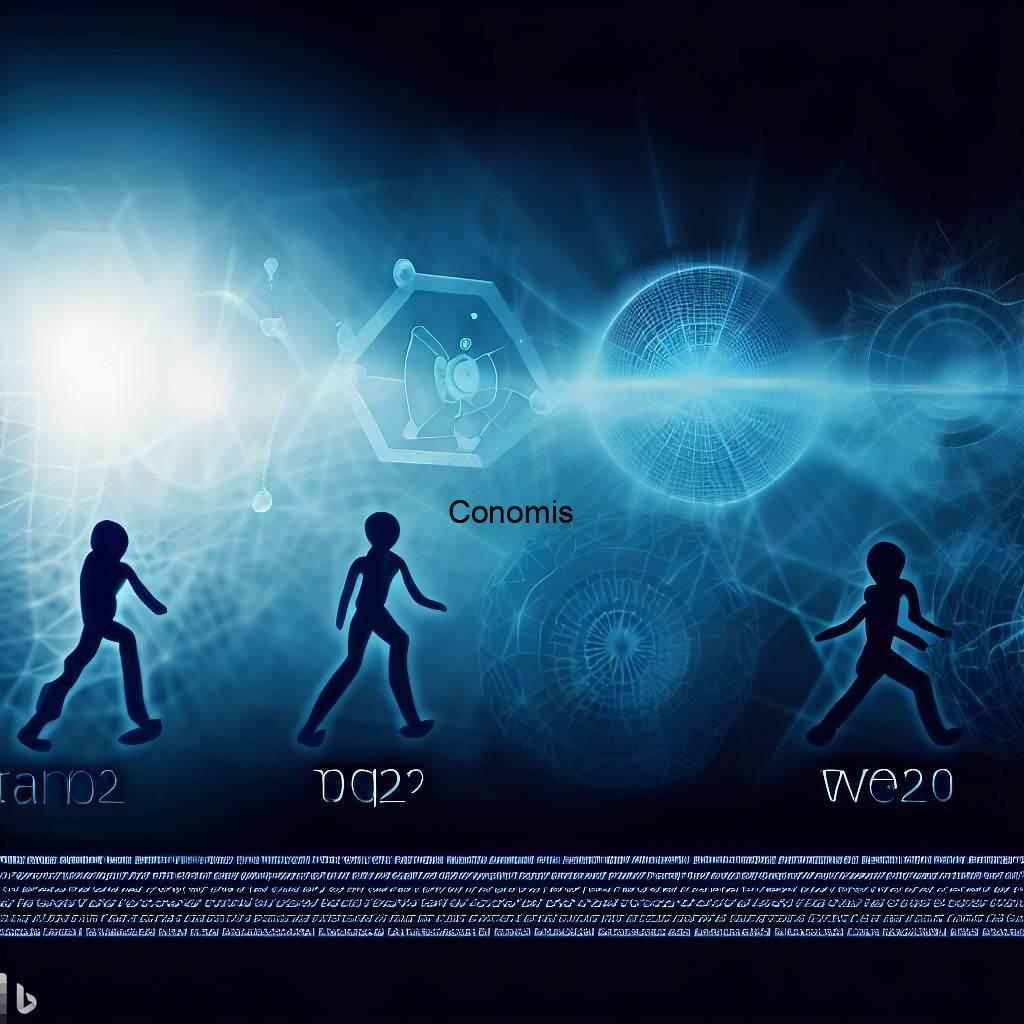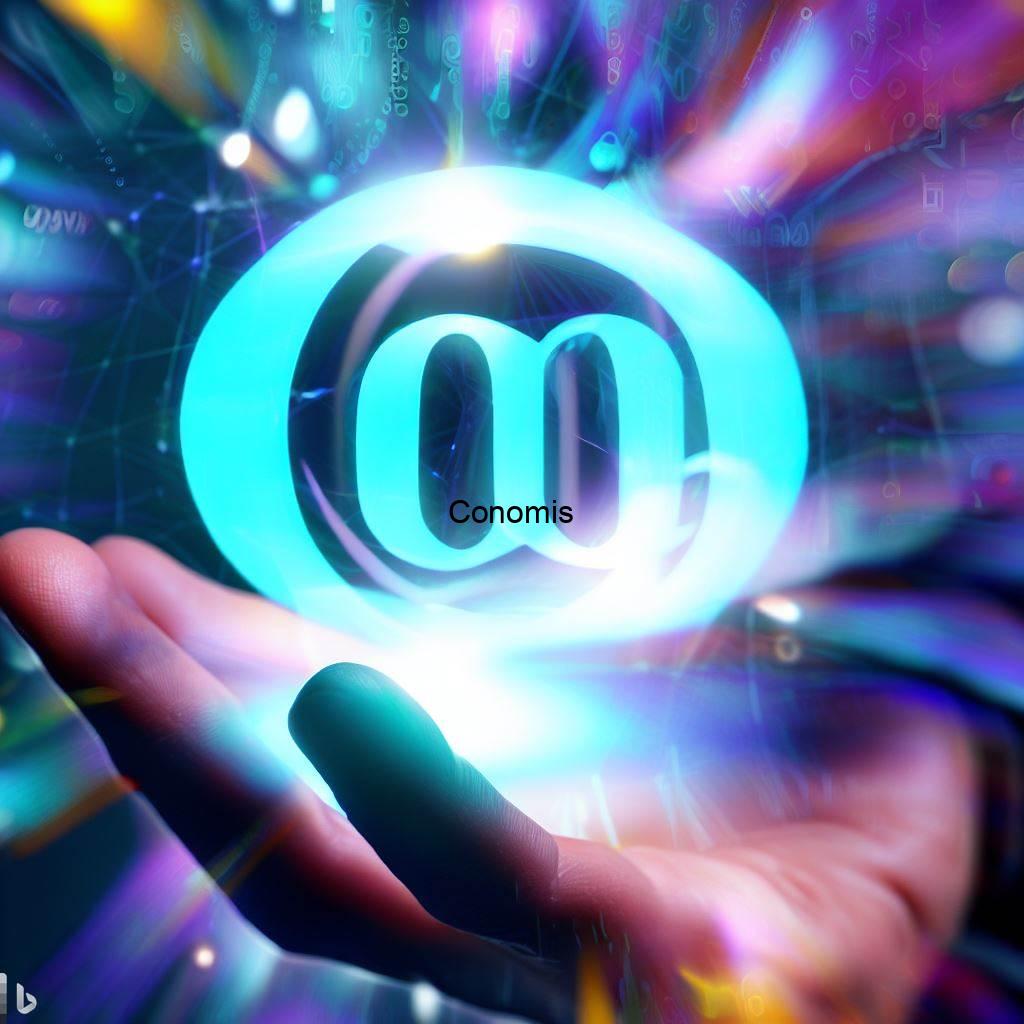Table of Contents
Introduction
The digital realm, with its myriad innovations, boasts a captivating chapter on the dot com. This isn’t just about a domain suffix; it represents an entire era, a pivotal shift, and a testament to relentless technological pursuits. The narrative, titled “Dot Com to Blockchain Domains: The Epic Saga of Digital Transformation Unveiled,” promises a deep dive into this transformative journey.
In its infancy, the digital world was marked by basic websites—rudimentary but undeniably groundbreaking. However, as technology advanced, so did the aspirations and scope of the digital world. The emergence of blockchain domains wasn’t merely a step forward in technology; it symbolized a profound change in understanding digital identity and ownership.

Each evolution brought its own set of challenges, insights, and a refreshed outlook. Such key moments and the continuous progress in the digital age have incessantly molded our virtual universe. As we venture further into this tale, we beckon our readers to accompany us on this thrilling exploration, a journey that traverses time, tech milestones, and the dynamic landscape of the digital domain.
The Evolution of Dot Com
The remarkable journey of ‘.com’ stands as a testament to the transformative power of the digital age. Initially envisioned as a simple digital signifier, this humble domain extension has burgeoned into a symbol synonymous with the very fabric of the internet. Over time, ‘.com’ has evolved from being just a technical appendage to URLs into a cultural phenomenon, representing credibility, commercial intent, and digital prowess.
Its metamorphosis didn’t happen overnight. As the internet burgeoned, businesses, individuals, and innovators flocked to secure their own ‘.com’ domains, realizing its potential as a powerful brand amplifier. This gold rush solidified its position, turning ‘.com’ from a mere digital address into a coveted digital real estate. Today, it’s more than a domain; it’s a declaration of legitimacy in the online world.

As we reflect on its storied past, one can’t help but ponder its future trajectory. In a landscape constantly reshaped by innovations like blockchain and AI, what’s the next chapter for ‘.com’? As it has always been, the only certainty is change, ensuring the ‘.com’ narrative remains ever-evolving, just like the dynamic digital cosmos it represents.
The Early Days of Dot Com
Birth of Dot Com
The inception of the ‘.com’ domain marked a pivotal moment in digital history. Its roots trace back to the 1980s, a time of burgeoning technological advancements. Introduced as one of the pioneering top-level domains (TLDs), ‘.com’ was not just a suffix but a revolutionary concept. Its primary objective was clear: to serve as a digital emblem for commercial ventures, a virtual storefront in the expanding universe of the internet.
Yet, its modest introduction belied the immense potential it carried. Few could have foreseen the seismic impact it would have on the digital landscape. Over time, ‘.com’ evolved beyond its original intent, gradually transforming from a mere domain extension into a powerful symbol of online authenticity and enterprise. Its presence hinted at more than just a digital address; it signaled credibility, ambition, and the dawn of a new era in commerce.

From those early days, when the internet was still in its nascent phase, the ‘.com’ domain stood as a beacon of promise. It beckoned innovators, entrepreneurs, and visionaries, laying the foundation for the digital empire we witness today. Who would’ve thought that this simple combination of characters would reshape the very essence of business, communication, and innovation in the decades to come?
Flourishing of Dot Com
The 90s: A Decade of Dot Com Dominance
The 1990s witnessed a seismic shift in the digital realm, marking the onset of the internet revolution. At the heart of this transformation was the ‘.com’, emerging not just as a domain extension but as the gold standard for online presence. As businesses and individuals alike clamored for a stake in this new frontier, ‘.com’ domains became the most coveted pieces of virtual real estate. It was no longer just a suffix; it was a status symbol, a badge of legitimacy in the rapidly expanding digital cosmos.
This era also saw the infamous ‘dot com bubble’. This speculative frenzy, where investments skyrocketed only to plummet dramatically, was more than just an economic event; it was testament to the ‘.com’ domain’s profound influence. Everyone wanted a piece of the ‘.com’ pie, believing in its promise of digital success and potential windfalls.

In retrospect, this period was a clear indicator of how integral the ‘.com’ domain had become to the very fabric of online identity. Its meteoric rise, and the craze it incited, underscored its role not just as a domain, but as the beating heart of the World Wide Web’s infancy.
Domain Development: A Journey Through Time
The Evolution from Static to Dynamic: Journeying into Web 2.0
The digital world is ever evolving, and one of its most transformative phases was the transition from basic, static web pages to the vibrant, interactive universe of Web 2.0. Initially, the internet was largely made up of static HTML pages. These were simple, straightforward, and served content in a one-size-fits-all manner. Every visit to such a site yielded the same unchanging content, akin to reading a printed page.
However, as technology advanced and user expectations grew, the need for a more dynamic, engaging online experience became paramount. Enter Web 2.0, a term coined to define this new wave of internet evolution. Unlike its predecessor, Web 2.0 was characterized by user-centric designs, fostering two-way communication. Websites were no longer just about presenting information; they were about interaction, collaboration, and personalization.

This era heralded the rise of platforms and marketplaces, where users could generate content, share insights, and interact in real-time. Social media platforms, blogs with comment sections, wikis, and multimedia sharing sites are prime examples. Furthermore, interactive elements like widgets, plugins, and user-generated content modules became mainstays.
E-commerce platforms, too, evolved, offering personalized recommendations based on user behavior and preferences. Such advancements not only reshaped the digital landscape but also fundamentally altered how users engaged with the web. In essence, Web 2.0 revolutionized our digital experiences, transforming passive viewers into active participants in the vast digital playground.
Decentralization Unleashed: The Advent of Blockchain Storage
As the digital landscape continued to evolve, it beckoned groundbreaking innovations. Chief among them was the introduction of blockchain technology, a game-changer that promised to reshape the way we perceived data storage, transparency, and security. Unlike traditional methods that relied on centralized servers, the essence of blockchain was its decentralized nature, where data was distributed and stored across a vast network of individual nodes.
This decentralization brought with it an array of advantages. First, it offered unparalleled transparency. With every transaction being recorded on a public ledger, accessible to anyone within the network, the room for discrepancies or hidden manipulations drastically reduced. Secondly, this distributed system enhanced security measures. As there was no single point of failure, potential hacks or data breaches became significantly more challenging for cyber attackers.

But perhaps the most revolutionary aspect was its disruption of the conventional domain hosting paradigms. The reliance on centralized servers and entities had been the norm for years. Blockchain threatened this status quo by eliminating the need for these central repositories. Instead, websites and online platforms could exist in a decentralized environment, free from the constraints and potential vulnerabilities of traditional hosting models.
In essence, blockchain’s emergence marked a pivotal moment in digital evolution, signaling a shift towards a more transparent, secure, and decentralized digital future.
The Future of Dot Com
Decentralization’s Ripple Effect: The Future of Domains
When one thinks of blockchain, cryptocurrencies might be the first association. However, the implications of decentralization extend far beyond just digital currencies. A standout application lies in the realm of domain hosting. The notion of domains existing on a blockchain might seem like a futuristic concept, but in reality, it’s closer than many realize.
The decentralized web, or “Web 3.0,” introduces a paradigm where domains are not just registered, but truly owned by the users. This ownership isn’t metaphorical; with blockchain, domains become immutable digital assets. This translates to domains that are resistant to external censorship, impervious to sudden takedowns, and truly in the hands of the owner without intermediary oversight.

Moreover, this system champions the principles of transparency and security. Every transaction, every change, every registration is logged on a transparent ledger, fortifying the domain’s integrity.
But the burning question remains: Can these blockchain-based domains ever overshadow the iconic and omnipresent dot com? Dot com, after all, isn’t just a domain—it’s a legacy, a symbol of the internet’s early promise. As we stand at this crossroads of innovation and tradition, the future of domains hangs in the balance. And while the potential of decentralization is undeniable, whether it will redefine the domain landscape or coexist with established norms is a narrative only time will unravel.
The Confluence of AI and Domains: A Dynamic Future Unveiled
The digital world has never been static, continuously shaped and reshaped by innovations. One of the most transformative forces in recent times is Artificial Intelligence (AI). Beyond robots and chatbots, AI’s influence is now palpable in the domain landscape, breathing new life into the ‘.com’ legacy.
AI’s capabilities are vast, but its application in the realm of domains is particularly intriguing. One notable manifestation is in predicting user behavior. By analyzing vast swathes of data, AI-driven tools can ascertain patterns and trends, enabling websites to tailor content that resonates deeply with the audience. This ensures that the visitor’s online experience becomes more personalized and engaging.

Moreover, AI is revolutionizing domain name selections. Think of entrepreneurs searching for that perfect domain name for their startups. AI can not only suggest names based on the business niche but can even gauge the potential popularity and effectiveness of a domain name. Such insights can be pivotal in ensuring the domain’s success and visibility.
In essence, AI is ensuring that the world of ‘.com’ remains not just relevant but pulsating with dynamism and potential. As AI continues its march forward, the intertwining of domain strategies with intelligent algorithms heralds an exciting, responsive, and adaptive future for the digital realm.
The Double-Edged Sword of Centralization in IT
In the vast landscape of Information Technology (IT), centralization has often emerged as a prevailing model, particularly in the early days of digital development. At its core, centralization in IT refers to consolidating data, resources, and processes in a singular, central system or location. This approach carries with it a slew of advantages but is not without its pitfalls.
From an operational perspective, centralization can be a boon. It offers streamlined management, as administrators only have one system or server to monitor and maintain. This often translates to reduced costs, both in terms of infrastructure and manpower. Furthermore, with a unified system, implementing security protocols or updates becomes straightforward, ensuring uniformity in protection standards.

However, centralization is not without its challenges. The most significant risk is that of a single point of failure. If the central system is compromised, the entire network is at risk. It also becomes a prime target for cyberattacks, given the potential goldmine of information it holds. Additionally, centralized systems can sometimes lead to bottlenecks, slowing down processes if there’s a high demand or if the system encounters an issue.
In conclusion, while centralization in IT brings efficiency and ease of management to the table, it’s imperative to weigh these benefits against the inherent vulnerabilities and potential challenges it presents. As the IT world evolves, the debate between centralization and its counterpart, decentralization, continues to garner attention and deliberation.
Benefits
Centralized systems ensure standardized processes, simpler management, and often, cost savings. Think of it like a library – one place, everything you need.
Disadvantages
However, centralization can also be a single point of failure. Like that library? If it catches fire, all its books are gone!
Navigating the Complex Realm of Data Scraping
In the digital age, data is often likened to gold, offering insights, driving decisions, and crafting experiences. Data scraping, an automated method of extracting vast amounts of data from websites, plays a pivotal role in this data-centric ecosystem. However, the intricacies of this practice are layered with both potential and controversy.
At its best, data scraping is a powerful tool. Businesses use it to monitor competitors, marketers harness it to understand consumer trends, and researchers employ it to gather data en masse. The speed and efficiency with which data can be collated, especially from multiple sources, make scraping a go-to method for many seeking actionable insights.

Yet, the practice isn’t without its challenges. Ethical concerns abound, especially when data is scraped without the consent of the website owner. Privacy issues come to the fore, especially if personal or sensitive information is involved. Moreover, excessive scraping can overload and slow down the target server, affecting its performance.
Legalities, too, play a significant role. Many websites have terms of service that explicitly prohibit scraping, and there have been instances where legal action was taken against scrapers.
In essence, while data scraping offers a quick, efficient way to gather data, it’s a method steeped in complexity, demanding careful navigation of ethical, legal, and technical terrains.
Advantages
Data scraping is akin to striking gold in the digital realm. This technique is invaluable for diverse tasks like market research and lead generation, offering a wealth of insights with speed and efficiency. Have you ever browsed price comparison sites and marveled at the vast array of prices? The behind-the-scenes magic often involves data scraping, pulling vast amounts of information from various sites to present a comprehensive comparison. The potential and applications of this method are vast, reshaping how businesses and websites operate.
Challenges
While data scraping offers vast potential, it’s not devoid of complications. Ethical questions arise when data is extracted without permission. Legal gray areas can lead to disputes, as many websites have terms prohibiting such practices. Additionally, there’s no guarantee of the scraped data’s accuracy, potentially leading to misinformation. It’s a powerful tool, but one that demands careful navigation of its intricate challenges.
Drawing the Line: Apps vs. Websites
In today’s digital age, both apps and websites serve as critical interfaces for users to interact with technology. However, distinguishing between the two is crucial to understanding their unique functionalities and advantages.
Websites, accessible via browsers, are a collection of interlinked web pages under a single domain name. They’re platform-independent, meaning they can be accessed from any device with an internet connection and a web browser. Websites, especially those that are responsive, can adapt to different screen sizes, ensuring a consistent user experience across devices.
Apps, or applications, are software programs designed for specific platforms, such as Android or iOS. They need to be downloaded and installed on a device. Apps can leverage device features, such as cameras, GPS, and other sensors, providing a more immersive and personalized user experience. They often function offline and can push notifications, fostering a deeper engagement with the user.

Yet, the decision between developing an app or a website isn’t binary. It depends on the intended user experience, the complexity of features, and the target audience’s needs. While websites might offer broader accessibility, apps excel in delivering specific functionalities tailored to the user’s device. In essence, both have their realms of excellence, shaped by the goals they aim to achieve.Core Differences
While both serve digital content, apps are platform-specific and often offline-accessible. Websites, on the other hand, are universally accessible but need the internet. It’s like choosing between a buffet and an à la carte menu.
AI: Revolutionizing the Worlds of Apps and Domains
The fusion of Artificial Intelligence (AI) with digital landscapes, including apps and domains, is reshaping the frontier of technological interactions. This integration presents a dynamic shift in how users experience digital spaces and how businesses operate online.
In the world of apps, AI’s influence is profound. Personalized recommendations on streaming platforms, chatbots in service apps, or fitness trackers predicting health trends – AI algorithms work tirelessly behind the scenes, curating experiences tailored for individual users. These algorithms analyze vast datasets, ensuring apps are not just functional but also predictive, adapting to user behaviors and preferences in real-time.

Similarly, when it comes to domains, AI is transforming the game. Domain registrars now employ AI tools to suggest domain names based on SEO rankings, keyword relevance, and user search patterns. This not only enhances domain visibility but also aids businesses in establishing a robust online identity. Additionally, AI-driven security protocols are being integrated to detect and counteract cyber threats, ensuring domain integrity and trustworthiness.
In essence, AI’s imprint on both apps and domains signals a move towards a more intuitive, predictive, and secure digital ecosystem. As AI continues its exponential growth, it promises a digital future that’s more aligned with user needs and business objectives, offering seamless, efficient, and personalized experiences.
Predictive Technologies
Predictive technologies, particularly in apps and domains, are changing the game. They harness the power of predictive analytics to finely tune user experiences. Take your favorite music app, for instance. Ever found it eerily accurate when it seems to sync with your mood, offering the perfect playlist? That’s predictive analytics at work, analyzing your listening habits, preferences, and patterns to curate a tailored experience. It’s this blend of technology and foresight that elevates user engagement, making digital interactions feel personalized and intuitive. The future of digital engagement lies in such predictive capabilities, turning passive users into active enthusiasts.
Enhanced User Experiences
In today’s digital realm, AI stands at the forefront of enhancing user experiences. Whether it’s voice-activated prompts that understand and execute commands or chatbots that assist in real-time, AI tailors’ interactions to individual needs. These intelligent features ensure seamless navigation, prompt assistance, and a level of personalization that feels almost human. Such enriched engagement doesn’t just simplify tasks; it creates memorable interactions, fostering brand loyalty. The result? Users aren’t just satisfied; they’re captivated, consistently returning for those elevated experiences. Through AI, the digital landscape has transformed from mere interaction to immersive engagement.

A Glimpse into the Future
As we peer into the digital future, it’s clear that the landscape of dot com and domains is on the brink of significant transformation. Powered by advancements like AI and the shift towards decentralization, we’re set to witness a reshaping of the online realm. Users, increasingly savvy and adaptive, will be at the heart of this evolution, driving demand for more personalized and secure experiences. The melding of cutting-edge tech with user aspirations promises a digital frontier brimming with innovation, adaptability, and endless possibilities. The next chapter of the digital narrative is poised to be its most exciting yet.
Conclusion
Tracing the path of ‘.com’, we’re provided with a vivid timeline that mirrors the intricate evolution of our digital age. What began as a simple form of online identification has now blossomed into a vast and complex network, intertwined with a myriad of technologies, innovations, and potentialities. The humble beginnings of ‘.com’ have now been overshadowed by its monumental role as the backbone of our online identities and businesses.
But as we navigate the present, our eyes are set on the horizon. We are on the verge of a new era marked by the integration of Artificial Intelligence, a move towards a decentralized digital structure, and the promise of even more transformative technologies yet to be conceptualized. These advancements beckon a future that promises to be as exhilarating as it is unpredictable.

However, amidst all the complexities and rapid advancements, a singular truth emerges: our digital journey, much like the trajectory of ‘.com’, is a testament to human ingenuity, adaptability, and an undying quest for progress. As we brace for what’s next, we can only anticipate with bated breath, ready to embrace a future that is both awe-inspiring and full of endless possibilities.
FAQs
When was the dot com introduced?
It was introduced in the 1980s as one of the original TLDs.
How does decentralization affect domain hosting?
Decentralized domains can be censorship-resistant, immutable, and truly user-owned.
Is data scraping legal?
It depends on the source and method. Ethical and legal considerations are paramount.
How do apps differ from websites?
Apps are platform-specific and can often work offline, while websites are universally accessible but need the internet.
What role does AI play in domain development?
AI offers tools to predict user behavior, tailor content, and enhance user experience.
You Can Also Read
https://unstoppabledomains.com/
https://www.investopedia.com/terms/d/dotcom.asp
https://www.lexology.com/library/detail.aspx?g=533fb2c9-725c-41d3-b2fd-64455f21ecbd
Conomis Thoughts
![]() Copyright 2023 CONOMIS
Copyright 2023 CONOMIS

